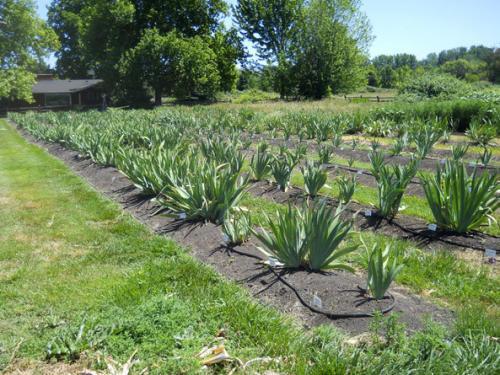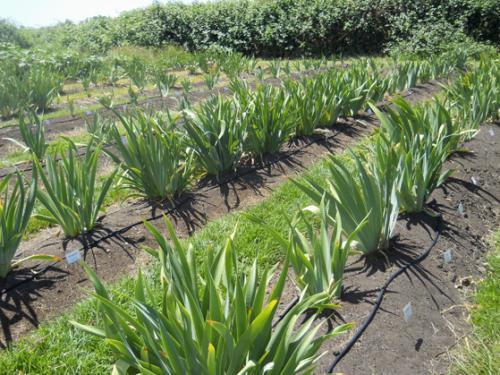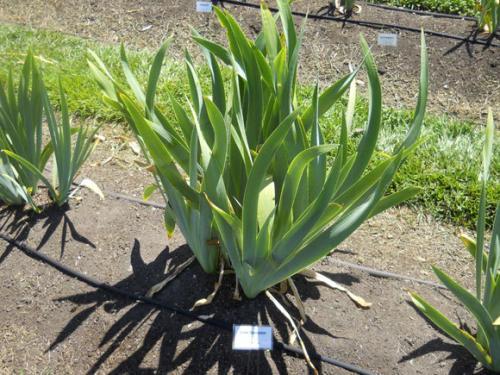This is an old thread about iris diseases, so I thought id give an update on my issue (now past issue) with Botrytis.
Disclaimer:
Consult FIRST with a certified nursery professional or a local extension agent as to what products/methods of control that would be available in your area.
I've been able to come close (95%) to eliminating it by carefully timed, rotating fungicidal sprays of Chlorothalonil, Captan, and Clearys 3336. I start in late September and continue drench spraying with a rotation every 10-14 days depending on climactic conditions. Also i use a pre/post plant fungicidal dip on new arrivals and transplants.
I'm also experimenting with biological controls such as Cease (Bacillus subtilis strains)
I've consulted with Portland State Extension Service, University of Idaho extension service on which products to use and when to use them. Because my region has host crops that are susceptible to Botrytis sp. in agriculture -- wine grapes, strawberries, onions, etc. the pathogen is naturally endemic to my area.
Ive voluntarily suspended most of my retail sales in 2021 as i researched and worked to get this under control, which i have for the most part. Ive had great success this year and my iris field is looking the best its ever looked.
Botrytis sp. is one of the most commercially important agricultural pathogens, and is nearly universal in distribution except in regions with low rainfall, limited freezing and thawing with abundant sunshine where its incidence is much mitigated by climate. You can't escape it, you can only be vigilant in spotting it and treat without delay. I consider all bearded iris vulnerable to this pathogen, so I treat all plantings especially during the critical months beginning late Sept.
and continuing October thru March.
It requires persistence and a multi-season effort to control this problem -- but it can be controlled and suppressed with the right products and timing of spray applications.


Clump of "Cool Operator" -- M. Sutton '16



